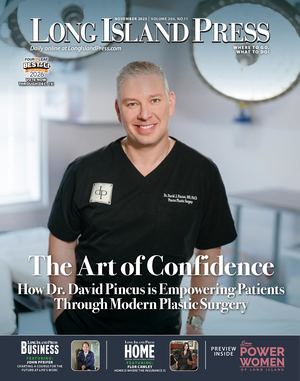The Glen Cove City School District’s test scores have shown “significant growth” in recent years, Superintendent Maria Rianna said.
According to a score breakdown in The New York Times, Glen Cove performed above the state average in select subjects while underperforming in others.
The state growth index indicates that Glen Cove schools are performing at “maximum growth,” according to Alexa Doeschner, the assistant superintendent for curriculum, instruction and technology.
“I have a phenomenal district,” Rianna said.
“Our students are achieving and at a faster growth–that growth measure—than most students who scored the same,” she said.
Rianna said the state calculated growth differently than in recent years.
To examine growth more accurately, the state compared student growth against students who scored the same as them in the previous academic year, she said.
“They took what our students scored and compared them with other students in the state that had the same score,” Rianna said.
“We made significant growth over other children in the state with the same score,” she said.
Glen Cove scored a 4, the highest possible growth level, in districtwide scores and in math scores, according to the new growth index, Doeschner said.
The district received a 3, the second highest growth level, in English language Arts, English language Learners and Students with Disabilities, she said.
Last year, the district scored a 1, the lowest growth level, in all categories.
The new growth index takes into account different student circumstances, such as students who are not native English speakers, have learning disabilities and face economic disadvantages.
Rianna pointed out that “22% of our students are ENL.”
She said non-fluent speakers may face difficulties on state testing that other students do now. The new growth index helps identify their progress against other students in the same position, she said.
Doeschner said this is the first time in recent years that the district has not been at risk of becoming a state “Target District.”
“Each year that I have been in my current role, I have had to write a letter to the state making an appeal not to be placed on a target list,” Doeschner said at the November Board of Education meeting.
She said the state has accepted her appeal each year.
“This year, I do not have to write a letter of appeal,” she said.
The district scored above the state average in four of the six elementary-level and intermediate-level tests.
Most notably, the fourth-grade scored 10 points above the state average.
At the high school level, the district scored above average on four of the 12 state regents exams, performing 18 points above average on the Mathematics A test.
The Glen Cove district scored below average on the sixth- and seventh-grade state tests, as well as in eight of the Regents exams.
“Our report card scores, although they are measuring growth of some of our students, it is not indicative of the district profile as a whole,” Rianna said.
She said the district does not have the state-recommended participation rate, which is 95%, because of the tetsing opt-out movement, which was popularized in 2012.
“We want more students to take the test,” Rianna said.
She said the state recommends that 95% of each grade level take the state ELA and Math tests in third through eighth grade.
Rianna said if only 50% of students take the test, scores do not reflect a true representation of the district.
“The fact that students are not participating at the percentage that we need them to–95 to 100–paints the wrong picture regarding student performance,” Rianna said.
As students mature, there tends to be less participation and more opt-outs, she said.
Rianna said participation has been “growing incrementally” in recent years.
“All scores are important in that it helps us to define areas where we could provide additional support,” Rianna said.
“But the scores for the state assessments are only a piece of the puzzle and by no means indicative of our district,” she said.
Without the full student body participating in testing, the district profile cannot be fully captured, Rianna said.
Rianna said students in the high school level are performing at a high standard.
“Once kids get into high school, I can tell you that I have more students going to college, I have an increase in our graduation rate and I have more students going to better colleges,” Rianna said.
She said that in recent years, there has been, on average, an 88% graduation rate. The state average is 86%.
“We have more students taking AP exams and AP courses,” Rianna said. “We have more students than ever taking dual enrollment courses.”
Dual enrollment courses allow high school students to receive college credit.
“Overall, we’re celebrating the achievement and the progress that our students are making,” Rianna said.
Rianna said what sets the district apart is its student body. She said students perform at high levels in multiple areas, such as academics, the arts and athletics.
“I have a student body that embraces and supports one another in a manner I’ve never seen in my 43 years of education,” Rianna said.



































